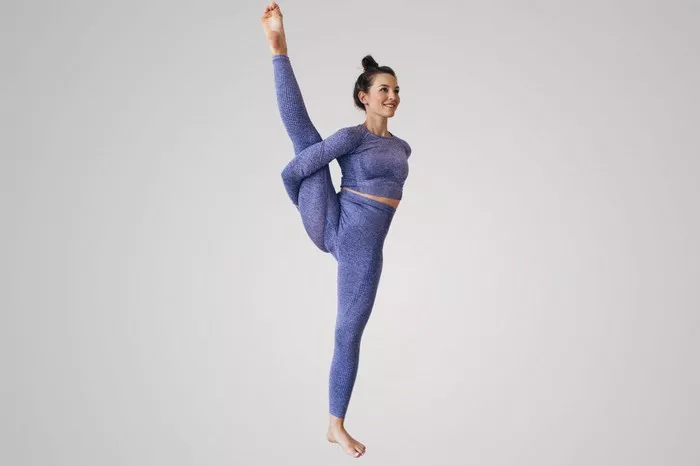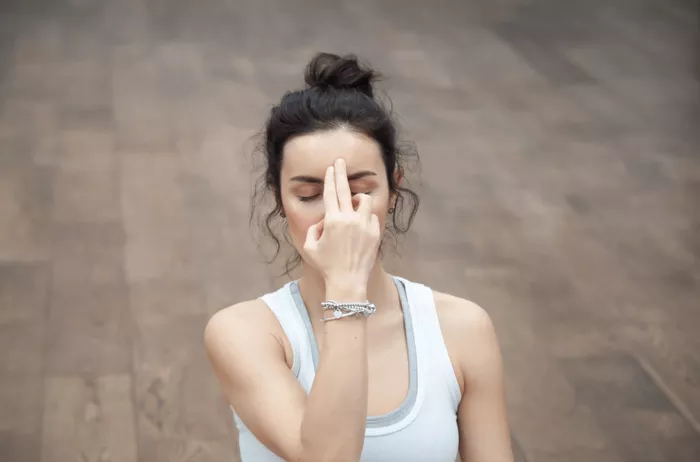Yin Yoga is a practice that has gained significant popularity in recent years due to its ability to provide deep relaxation and rejuvenation to the body and mind. Unlike more dynamic styles of yoga such as Vinyasa or Ashtanga, Yin Yoga focuses on stillness and long-held poses to stretch and target deep connective tissues, such as ligaments, tendons, and fascia. But what exactly are Yin Yoga poses? How do they differ from other yoga practices? And what benefits can practitioners expect from incorporating them into their routine?
This article will answer these questions in detail. We’ll dive into the characteristics of Yin Yoga, explain the key principles behind Yin Yoga poses, and discuss how these poses can improve your flexibility, mobility, and overall health. By the end of this guide, you’ll have a thorough understanding of what Yin Yoga poses are and how they can benefit your body and mind.
Understanding Yin Yoga Poses
Yin Yoga is a slow-paced, meditative form of yoga that focuses on holding passive poses for an extended period of time. The primary goal of Yin Yoga is to stretch and stimulate the deeper tissues of the body, including the fascia, ligaments, and tendons. These tissues respond best to gentle, sustained pressure, which is why Yin Yoga poses are typically held for anywhere between 3 to 5 minutes or even longer.
The practice is deeply influenced by the principles of Traditional Chinese Medicine (TCM), particularly the concept of energy flow or “Qi” (pronounced “chee”). In Yin Yoga, it is believed that by holding poses for long periods, practitioners can help release blockages in the energy pathways, allowing the body’s natural flow of energy to be restored. This gentle, targeted stretching aims to release tension and bring the body into a state of deep relaxation.
The Difference Between Yin Yoga and Other Forms of Yoga
One of the most noticeable differences between Yin Yoga and more dynamic yoga practices (like Hatha, Vinyasa, or Ashtanga) is the pace of the class. While Vinyasa and Ashtanga involve continuous movement and flow, Yin Yoga is slow, still, and often meditative. In Yin Yoga, the focus is not on building strength or endurance through active postures but on releasing tension in the body and cultivating mindfulness and relaxation.
In more active forms of yoga, you might move from one posture to the next relatively quickly, holding each pose for a short duration. In contrast, in Yin Yoga, the emphasis is on stillness. You typically enter a pose slowly, with a focus on mindful breathing, and then hold the pose for several minutes. The key here is not to push the body to its limits but to find a comfortable edge where the body can begin to release deep layers of tension.
Another difference is the areas of the body that are targeted in Yin Yoga. While more dynamic forms of yoga often focus on the muscles, Yin Yoga focuses primarily on stretching the fascia and connective tissues. This makes Yin Yoga an excellent complement to other forms of exercise or yoga practice that work more on the muscular system.
The Essential Yin Yoga Poses
Now that we have a basic understanding of Yin Yoga, let’s look at some of the key poses typically practiced in this style. These poses are designed to stretch and release tension in the deep connective tissues, promoting flexibility, mobility, and overall well-being.
1. Child’s Pose (Balasana)
Child’s Pose is a gentle resting pose that helps stretch the lower back, hips, and thighs. In Yin Yoga, it can also help calm the mind and relieve tension in the body. The pose is performed by kneeling on the mat with your big toes touching and knees spread wide. You then lower your torso down towards the mat, extending your arms forward and resting your forehead on the floor. In Yin Yoga, you would typically hold this pose for 3 to 5 minutes to fully relax the body and mind.
2. Forward Fold (Paschimottanasana)
Forward Fold is a foundational pose in many yoga styles, and in Yin Yoga, it is typically practiced seated with the legs extended straight in front of the body. You fold forward from the hips, allowing the torso to lengthen over the legs, and you may use props like blocks or cushions to support your body if needed. The stretch focuses on the hamstrings, lower back, and spine. In Yin Yoga, you would hold this pose for a few minutes to release deep tension in the back and legs.
3. Butterfly Pose (Baddha Konasana)
In Butterfly Pose, you sit with your feet together and your knees bent out to the sides, resembling the shape of a butterfly’s wings. This seated stretch targets the hips, groin, and inner thighs. In Yin Yoga, the emphasis is on folding forward over your legs, allowing gravity to deepen the stretch. The pose can be held for several minutes, which helps to increase hip flexibility and relieve tension in the lower body.
4. Dragon Pose (Lunge Variation)
Dragon Pose is similar to a deep lunge, and it is used in Yin Yoga to open up the hips, groin, and thighs. The pose is often practiced with the back knee on the mat and the front knee bent at a 90-degree angle. The arms can be placed on the floor or elevated on blocks for support. By holding the pose for an extended period, you allow the hips to open and release deep tension.
5. Sphinx Pose (Salamba Bhujangasana)
Sphinx Pose is a gentle backbend that helps to open up the chest, shoulders, and spine. In Yin Yoga, this pose is typically held for a longer duration to allow for a deep release in the lower back. You lie on your belly and prop yourself up on your forearms, keeping the elbows directly under your shoulders. The chest lifts slightly, and the lower back gets a gentle stretch. This pose helps to release tightness in the spine and increase flexibility in the back and abdominal muscles.
6. Caterpillar Pose (Seated Forward Fold)
Caterpillar Pose is a seated forward fold where you sit with your legs extended straight in front of you and slowly fold forward, allowing your torso to rest on your thighs. The goal is to release tension in the spine, hamstrings, and lower back. The pose can be modified with props, such as blankets or cushions, to make it more accessible for practitioners with tight hamstrings or lower backs. In Yin Yoga, you would hold this pose for several minutes to facilitate a deep stretch.
7. Reclining Twist (Supta Matsyendrasana)
Reclining Twist is a gentle spinal twist that targets the lower back and hips. To perform this pose, you lie on your back with your arms extended out to the sides and your knees bent. You then drop your knees to one side, allowing the spine to twist and the lower back to release tension. In Yin Yoga, the twist is held for several minutes on each side, allowing the body to fully relax into the stretch.
8. Legs Up the Wall (Viparita Karani)
Legs Up the Wall is a restorative pose that promotes circulation and relaxation. To practice this pose, you lie on your back with your legs extended vertically against a wall and your arms resting at your sides. This position helps to reverse the effects of gravity and relieves tension in the legs and lower back. It’s a great pose for unwinding after a long day and calming the nervous system. While this pose is more restorative than a deep stretch, it still offers numerous benefits for the legs and lower body.
9. Happy Baby Pose (Ananda Balasana)
Happy Baby Pose is a playful and calming pose that targets the hips, groin, and lower back. To perform Happy Baby, you lie on your back, bend your knees towards your chest, and then grab the outer edges of your feet with your hands. You gently press your knees towards the floor, opening up the hips and stretching the groin. While this pose is typically practiced in a more dynamic setting, in Yin Yoga, it’s held for several minutes to allow the body to release any tension in the hips and back.
See Also: What Are the Different Types of Yoga Poses?
Why Practice Yin Yoga?
The practice of Yin Yoga offers several profound benefits, both physical and mental. The key benefits include:
1. Improved Flexibility
By holding stretches for an extended period, Yin Yoga helps to improve flexibility in the muscles, ligaments, and tendons. It targets the deep connective tissues that are often overlooked in more active forms of yoga, resulting in greater overall flexibility and mobility.
2. Joint Health
Yin Yoga is particularly beneficial for improving joint health. The long-held stretches allow the joints to open up, increase synovial fluid production, and promote better circulation in the joint areas. This can be helpful for people dealing with stiffness or discomfort in the joints.
3. Stress Relief and Relaxation
Because Yin Yoga emphasizes stillness and deep breathing, it is an excellent practice for relieving stress and promoting relaxation. The gentle stretching and focus on mindfulness activate the parasympathetic nervous system, which helps to lower cortisol levels and reduce overall tension in the body.
4. Emotional Release
Yin Yoga’s long-held poses encourage deep introspection, which can lead to emotional release. The stillness and focus on the breath can help practitioners process emotions and let go of mental and emotional blockages that may be stored in the body.
5. Improved Circulation
By holding poses for extended periods, Yin Yoga enhances blood flow to the deep tissues, improving circulation throughout the body. This can lead to better oxygenation of the tissues and promote healing and recovery.
Conclusion
Yin Yoga poses are a powerful tool for improving flexibility, joint health, and mental relaxation. Through long-held, passive stretches, Yin Yoga targets the deep connective tissues in the body, encouraging the release of tension and enhancing overall well-being. Whether you’re looking to complement a more active yoga practice or simply reduce stress and improve mobility, Yin Yoga offers a unique approach to balancing the body and mind.
By incorporating Yin Yoga into your practice, you can cultivate greater flexibility, ease, and mindfulness, making it a valuable addition to your yoga journey.
You Might Be Interested In:























